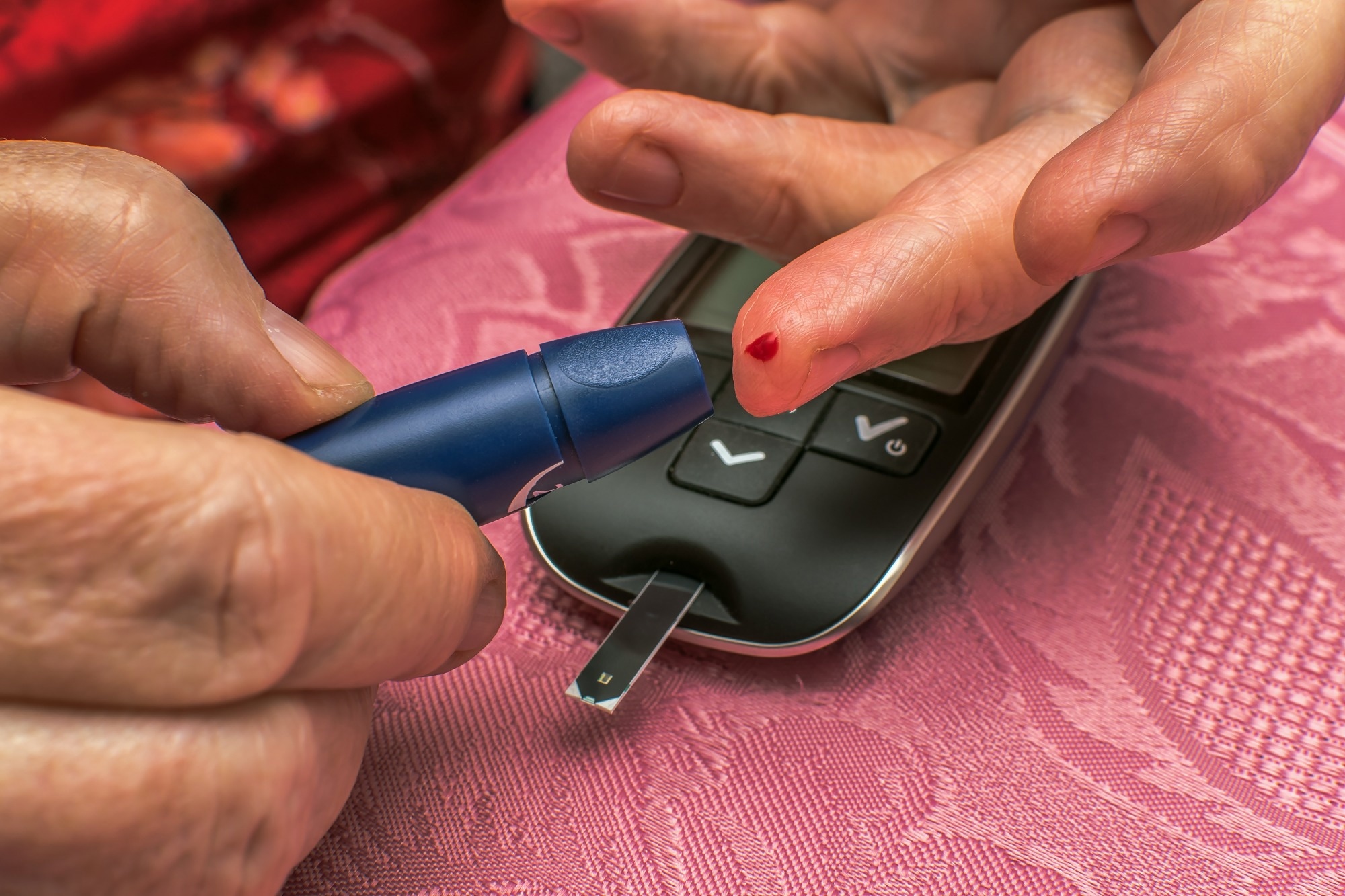In a recent study published in the Sports Medicine and Health Science journal, researchers assessed the impact of exercise precision medicine on type 2 diabetes.
Type 2 diabetes (T2D) is typically treated with a combination of pharmacological medications and lifestyle measures, such as physical activity (PA) and dietary changes. While concurrent administration of metformin and exercise may reduce the chronic and acute impact of exercise on glucose metabolism. Hence, recommending exercise to metformin-treated patients necessitates careful consideration of the related benefits and dangers. In particular, the latter requires extensive scientific research.
 Case Report: Exercise precision medicine for type 2 diabetics: Targeted benefit or risk? Image Credit: andrekoehn / Shutterstock
Case Report: Exercise precision medicine for type 2 diabetics: Targeted benefit or risk? Image Credit: andrekoehn / Shutterstock
About the study
In a recent study, researchers assessed the difficulties related to prescribing exercise to metformin-treated type 2 diabetes patients.
The case patient was a woman aged 67 years. In 2009, she was diagnosed with T2D. Her doctor recommended her prescription, which has remained unchanged over the previous five years. Metformin was administered at 1,500 mg per day, to be consumed in two dosages of 750 mg daily at breakfast and dinner. Additionally, she was prescribed 100 mg of sitagliptin to be consumed with breakfast in the morning, along with statins consumed to lower her blood lipid levels.
For the duration of the trial, the participants' weight remained at 51 kg, and their body mass index remained at 20.4 kgm-2. Self-assessments and smart band data were employed to assess the PA level, which was described as consistent and moderate. The mean number of daily steps varied between 6,000 and 8,000 steps. Prior to the beginning of the trial, the subject did not engage in any high-intensity interval training (HIIT). At the beginning and end of the trial, fasting blood samples were obtained to evaluate biomarkers characterizing the patient. These biomarkers included variables linked to glucose and lipid metabolism, conventional blood counts, and liver enzymes.
In order to determine the immediate impacts of a single session of exercise along with medication on concentrations of blood lactate and glucose, a maximal exercise test was conducted on a cycle ergometer to determine the maximum load. Almost 48 hours after the exercise, the patient performed one HIIT session almost 45 minutes after lunch. Concentrations of blood lactate and glucose were also measured.
Throughout the first month of the trial, the patient adhered to a time series protocol in order to measure the variations in blood lactate and glucose concentrations with and without treatment or exercise. This protocol included four days without medication or exercise (NoMed/Ex), five days with only medication (Med), and five days with medication and exercise (Med/Ex). Using a cycle ergometer, HIIT was conducted once every 104 days for the medicine and exercise condition.
Results
Until 20 minutes, during acute HIIT, blood glucose concentrations declined while lactate rose gradually. The blood lactate concentration was consistent above 3 mmol/L, whereas the blood glucose concentration plateaued at approximately 5.6 mmol/L. Throughout HIIT, the variations in glucose decline between every incremental load were comparable, although blood lactate levels changed at random. NoMed/Ex reported a glucose concentration of almost 1 mmol/L higher than Med and Med/Ex. Under all conditions, the lactate levels were below 2 mmol/L. Nevertheless, Med caused about a 0.5 mmol/L increase in concentration.
In NoMed/Ex, the average glucose level was 7.6 mmol/L, with 68% of the time in range (TIR) and 32% of the time above range (TAR). In Med, the mean concentration was 6.8 mmol/L, with 23% TAR and 77% TIR, whereas in Med/Ex, the mean concentration was 6.6 mmol/L, with 16% TAR and 84% TIR. After 45 minutes of post-lunch activity, the glucose level reduced until 90 minutes post-lunch and exercise but subsequently rose before dinner.
In Med/Ex and NoMed/Ex, the lactate concentration in capillary blood was 37.5% and 23% higher than 2 mmol/L, respectively, but in Med, the lactate concentration was almost 66.7% higher. The concentrations of glucose and lactate were positively linked. For the duration of the trial, the body mass index (BMI) remained at 20.4 kgm-2 and the weight remained at 51 kg. In months that included three weeks of house confinement along with lower levels of PA, the mean glucose levels were considerably higher than in months involving free living and higher levels of PA. Higher PA levels were accompanied by a greater TIR and lower TAR.
Conclusion
The study findings showed that in combination with metformin, exercise might improve glycemic control in T2D patients, whereas metformin may increase lactate levels over the long term. This lends credence to the notion that exercise should also be deemed as a way to prevent potential hazards associated with metformin therapy. The researchers recommend large-scale research to expand on these findings by examining the time of exercise in connection to drug administration.
Journal reference:
- Shenglong Le, Moritz Schumann, Si Man Lei, Wu Yao, Sulin Cheng, Exercise precision medicine for type 2 diabetics: Targeted benefit or risk?, Sports Medicine and Health Science, 2023, ISSN 2666-3376, DOI: https://doi.org/10.1016/j.smhs.2023.02.003, https://www.sciencedirect.com/science/article/pii/S2666337623000082